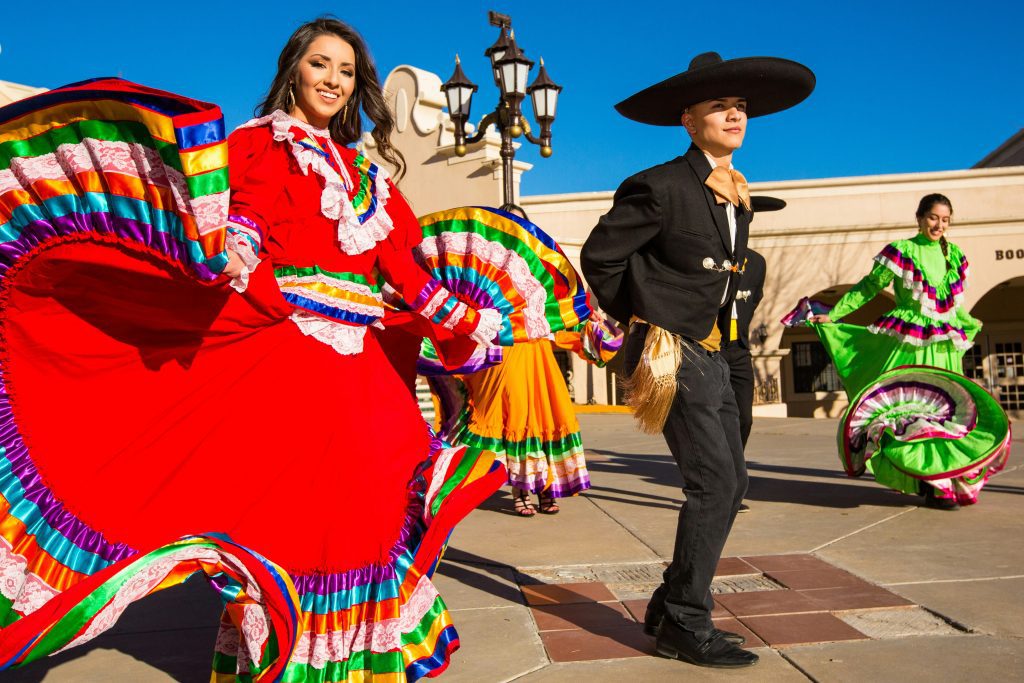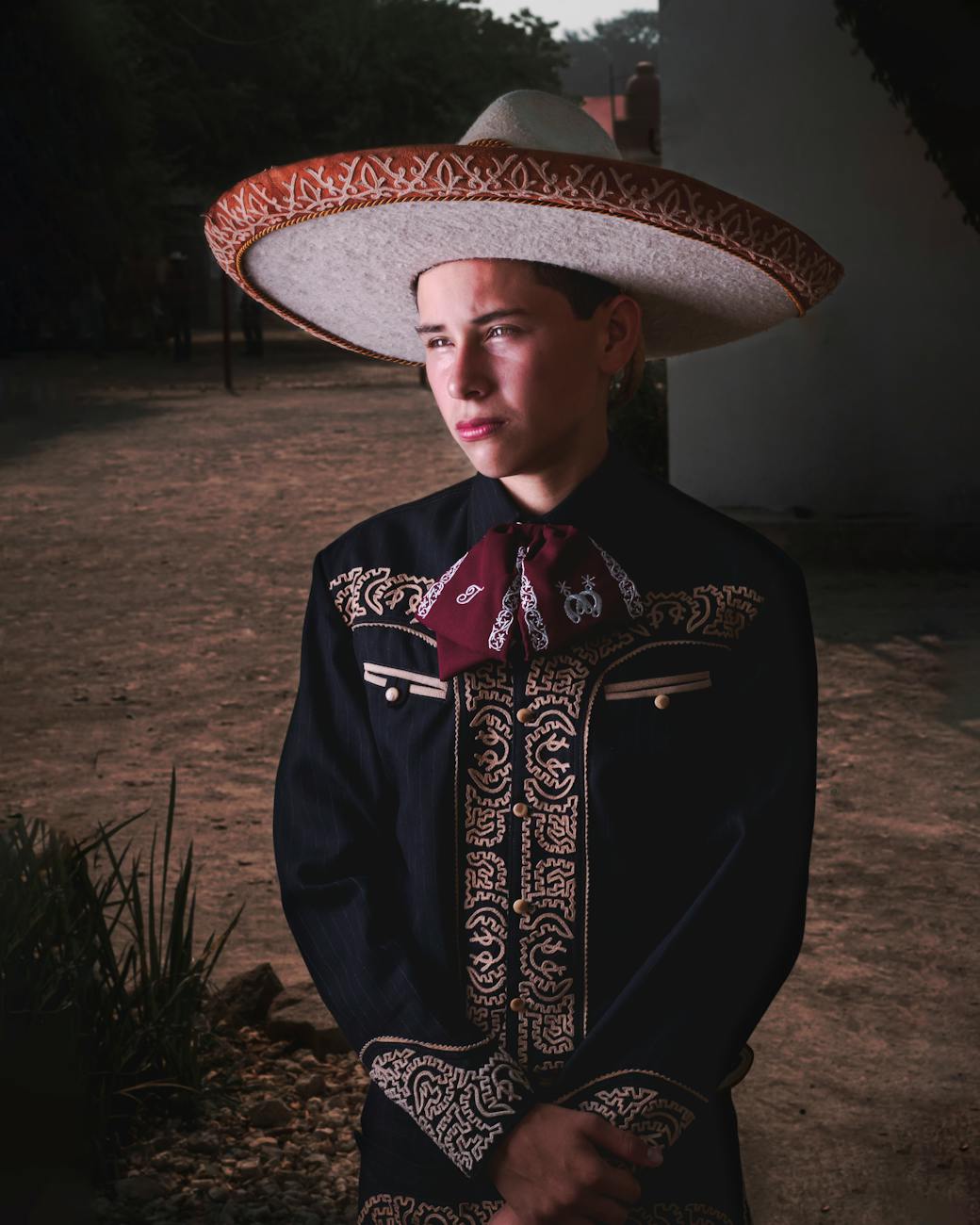The Charro Suit: A History of Mexican Elegance
1. Hook & History
The Charro Suit: Just a costume, or a timeless piece of Mexican fashion?
Believe it or not, the Charro suit even made an appearance in Hollywood! The legendary actor Charlton Heston donned a custom-made Charro suit for his role as a Mexican hero in the 1952 film “The Texan.”
Vicente Fernández & The Charro of Huentitán: Vicente Fernández, often referred to as “El Charro de Huentitán” (The Charro of Huentitán), was a legendary Mexican singer known for his ranchera music and iconic Charro suit appearances. He popularized the image of the Charro suit on a global stage, solidifying its association with Mexican music and culture.
The Charro suit, a symbol of Mexican elegance and national pride, boasts a rich history deeply intertwined with equestrian skill and cultural identity. Its journey began in the 17th century, not on a concert stage, but on the vast ranches of colonial Mexico.
Imagine highly skilled horsemen, the “charros,” traversing the Mexican landscape. Their attire wasn’t merely clothing; it was a reflection of their expertise and social standing. Initially, these charro suits were practical: tight-fitting for riding, crafted from durable suede, and adorned with unique embroidery using local cactus fibers. This distinct style served a dual purpose – practicality and a mark of distinction for these skilled riders.

However, history took an interesting turn with Spanish colonial rule. The Spanish strictly limited who could ride horses, and only the upper class wore garments resembling the charro suit. This sparked a creative response from the Mexican charros. Unable to mimic the Spanish attire, they refined their own, crafting suits that were not only functional but also imbued with cultural significance.
As Mexico gained independence in 1821, the Charro suit transcended its ranch origins. It became a symbol of national identity, representing the skill and pride of the Mexican people. This evolution saw the incorporation of finer materials like silk and elaborate embroidery patterns, reflecting a shift towards elegance and cultural expression.
2. A Rich Equestrian Heritage
By the 19th century, the Charro suit became intricately linked with the rising popularity of mariachi music. Mariachi performers adopted the suit, adding vibrant colours and further embellishments, creating a visually stunning stage presence that perfectly complemented their music. This association solidified the Charro suit’s place in Mexican culture, becoming a national emblem recognized worldwide.
Today, the Charro suit continues to hold a special place in Mexican hearts. It’s worn during national holidays, charrería competitions (traditional Mexican rodeo), and by mariachi performers. Even modern fashion designers sometimes reference elements of the Charro suit, showcasing its enduring influence. The Charro suit serves as a reminder of Mexico’s rich equestrian heritage, cultural pride, and the enduring legacy of the skilled charros who first donned these garments centuries ago.
3. The Anatomy of a Charro Suit
The Charro suit, a cornerstone of Mexican folklore, transcends mere clothing. It’s a symbol of heritage, skill, and cultural pride. But what exactly makes up this iconic outfit? Let’s delve into the components that define the Charro suit:

The Charro suit isn’t just a piece of clothing; it’s a cultural ambassador, a vibrant symbol woven into the very fabric of Mexican identity. Its significance transcends fashion, deeply entwined with music, national celebrations, and equestrian traditions. Let’s explore how the Charro suit continues to resonate with the Mexican people.
The Charro suit and mariachi music are a match made in Mexican heaven. Mariachi performers have adopted the suit as their signature attire, often incorporating vibrant colours and intricate embroidery. This visual spectacle perfectly complements their music, transforming them into living embodiments of Mexican culture. The iconic image of mariachis in Charro suits has become synonymous with Mexico worldwide, solidifying the suit’s place in the nation’s cultural identity.
5. Modern Day Relevance
The Charro suit has undergone a fascinating transformation to adapt to modern times. Here’s how this iconic garment continues to thrive:
- Mariachi Legacy: The Charro suit has become synonymous with mariachi music. Modern mariachi groups worldwide wear the suit, adding vibrant colours and unique embroidery designs to create a distinctive visual identity. This adaptation not only reflects regional flair but also caters to a global audience’s taste for visual spectacle.
- Fashion Reinterpretations: Modern fashion designers haven’t ignored the Charro suit’s rich heritage. Elements like the bolero jacket silhouette, intricate embroidery patterns, and decorative belts are finding their way into contemporary designs. This allows a younger generation to connect with the Charro suit’s aesthetics freshly.
- Material Innovations: While traditional Charro suits were crafted from suede and leather, modern versions incorporate a wider range of materials. Lighter fabrics like cotton and linen make the suit more comfortable for warmer climates, while synthetic materials offer improved durability and affordability.
- A Touch of Modernity: While the core elements of the Charro suit remain, some modern adaptations cater to practicality. For example, some tailors offer Charro suit pants with a slightly looser fit compared to the traditionally tight-fitting style, allowing for greater comfort in non-riding situations.
References:
Los Angeles Times. “Of History and Hand-Stitching: The Responsibility of Wearing a Charro Suit.” LAist, 2023. https://laist.com/news.
Botines Charros. “Charros y Escaramuzas.” botinescharros.com, 2023. Accessed 16 May 2024.
Vallarta Nayarit Blog. vallartanayaritblog.com. Accessed 15 May 2024.
Fox Cities Performing Arts Center. “The History and Cultural Significance of Mariachi.”. Accessed 16 May 2024.


